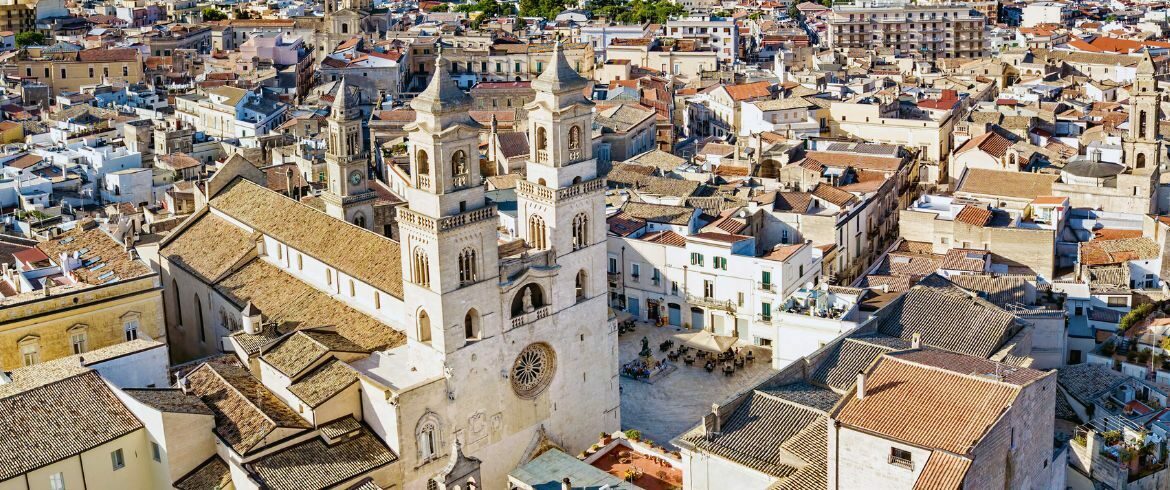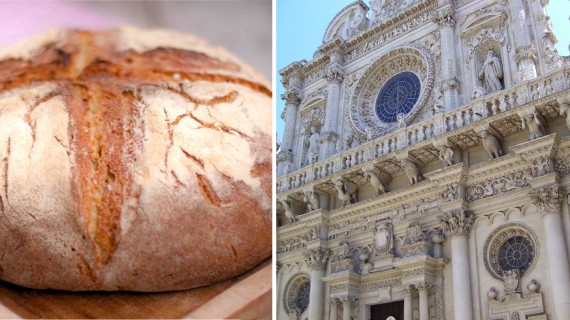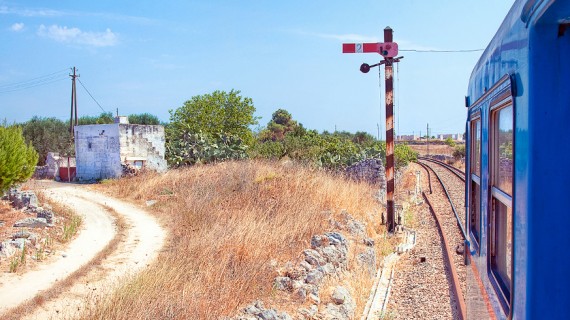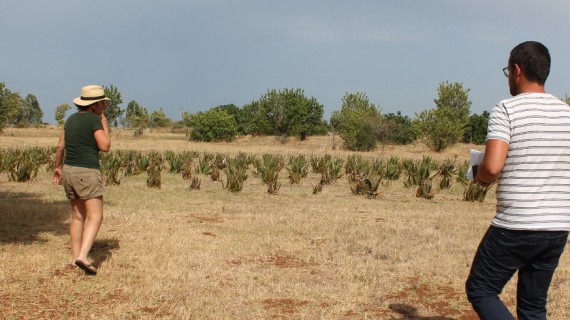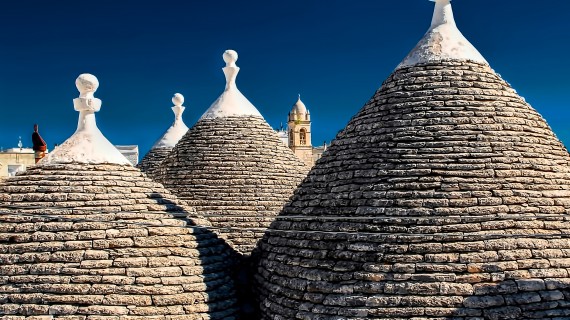Often known as the City of Bread, Altamura is a town in the province of Bari (South Italy) that encapsulates the essence of Puglia. Read more to discover my tips about hidden Altamura as a true local that will help you get to know the most characteristic places of our culture

Surrounded by the beautiful Alta Murgia National Park and karst sinkholes, Altamura is one of the most characteristic places in central Apulia. This is mainly due to its all-Medieval historical centre and the fame of its product of excellence, Pane di Altamura DOP (Altamura bread).
But that is not all. While very often hordes of tourists invade the course of the city’s historic centre, there are also many hidden places among the narrow streets that are beautiful to photograph and where you can enjoy our specialities.
The historical centre
When one goes to Altamura, the area of the city one tends to visit first is the historic centre, because it is more peculiar and of greater cultural importance. Often, however, you only linger on the main street for fear of getting lost in the myriad of streets that branch off.
Don’t be afraid to venture out! The streets in the historical centre of Altamura have a peculiarity: many of them have an end and do not find an exit in the main street. These closed streets are called ‘claustri‘ (cloisters) and are a valuable part of the town.
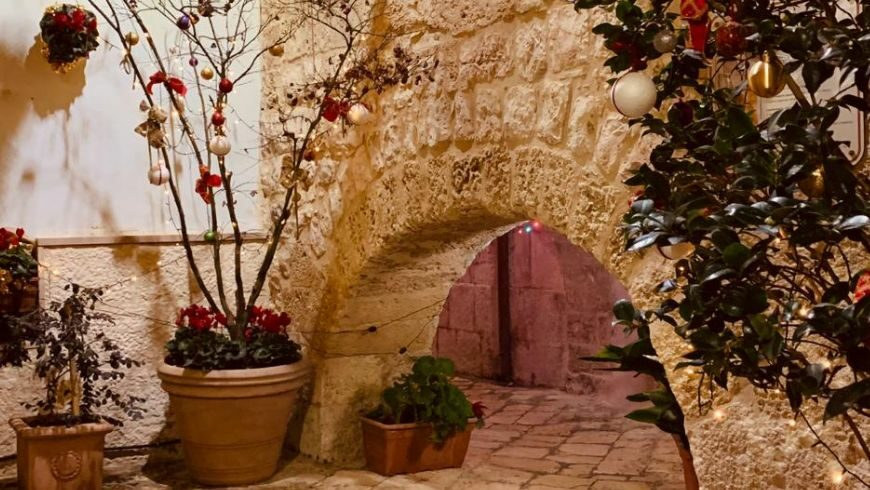
One of the most beautiful cloisters is the Arco Basso (Low Arch), which, as its name implies, stands out because of a very low arch from which one can pass to the neighbouring alley. My advice is to visit it at Christmas time as the inhabitants decorate it and deck it out.
The Claustro Inferno is also a must-see. You get to it after climbing a steep flight of steps just outside the walls, passing a very narrow street where you can only proceed in a single file, and untangling yourself from a tangle of streets reminiscent of the circles of hell described by Dante, hence its name.
Echoes of Frederick II of Swabia
The Cathedral

The Cathedral of Santa Maria Assunta, erected at the behest of Emperor Frederick II of Swabia in the 13th century, is certainly one of the structures that stand out most to the eye when walking along the avenue dedicated to the emperor of the same name. Its most iconic elements are certainly its rose window and the lions protecting the portal, which earned it the epithet Lioness of Apulia in the 18th century.
What is most striking about the cathedral, however, is the juxtaposition of the most disparate architecture inside Byzantine-style capitals, ancient mediaeval columns, the 16th-century nativity scene and the 18th-century altar. The mixture of styles, however, does not result in a jumble of elements, but in a combination that is very pleasing to the eye.

Many tourists, however, do not know that it is possible to visit a somewhat hidden part of the cathedral. I am talking about the women’s galleries, the balconies from which women attended Holy Mass until a few centuries ago.
From here you can get a different view of the entire structure and also of the exterior overlooking Piazza Duomo.
The historical re-enactment: Federicus
One of the times of the year that we Altamurans look forward to most is the medieval festival of Federicus. This is a historical re-enactment during which we celebrate Emperor Frederick II and all his exploits. The festival usually lasts three days and takes place during the spring holidays of 25 April or 1 May.
During these intense and activity-packed days, the historic city centre is transformed and is once again decorated as it was in the 13th century. In addition, most of the citizens do activities and therefore wear typical medieval clothes in the streets where 13th-century motifs resound.
The most representative part is Frederick’s procession with all the members of his court, in which the commoners, inhabitants of the court, flag-wavers, musicians and jesters take part.

During these three days, the narrow streets of the city centre are filled with a magical atmosphere, thanks to the performances of the fire-eaters and stilt-walkers, the sung narratives of ancient stories and open-air dances, the light games and the shows with the birds of prey that Frederick and his Bianca Lancia loved so much.
Just outside the city
Dinosaur footprints
At Pontrelli, a deposit containing more than 2,000 well-preserved dinosaur footprints dating back to the Cretaceous period, around 70 million years ago, was discovered. The footprints refer to 200 different specimens of five different species of dinosaurs, and they are organised in real tracks.

Compared to other finds of this kind that are in different parts of the world, the Altamura footprints are unique. They have a near-perfect state of preservation and thanks to them, a high number of dinosaur species are there. You can enter the quarry and see these giant footprints live. It is a breathtaking experience due to its rarity and is especially exciting for children.
The Man of Lamalunga
In 1993, the CARS (Altamura Speleological Research Centre) discovered the remains of a Neanderthal man inside the Lamalunga cave (only 5 km from Altamura). The fossil skeleton traces back to an adult specimen of a man that remained embedded in the stalactites and stalagmites of the dolina, which have allowed it to preserve over the millennia.
Obviously, as of today you cannot visit the cave in person, but you can see a reproduction of Ciccillo’s likeness (a name jokingly given to the man) at the National Archaeological Museum in town.
You can, however, get closer to the cave by going to the Pulo, a large karst sinkhole surrounded by the Marugiana nature. And why not, maybe pick up some finochietto and wild asparagus on the way!
Eating local in Altamura
Apulia is famously known as the cradle of good food in Italy, and Altamura’s specialities are no different.

Of course, I recommend you try the freshly baked PDO bread, whose fragrant crust and soft, fragrant interior will win your hearts. Then indulge in the ever-present panzerotti (fried and baked), focaccia and taralli. My bakery of choice is Panificio San Francesco, a bakery just outside the centre and not frequented by tourists, but really worth going to for an explosion of flavours in your mouth. Trust a true local!
If you want to try typical dishes such as homemade orecchiette with turnip tops, braciole al sugo, capunti with mushrooms and sausage, lampascioni, cardoncelli and pecora a la rzzaul (a traditional dish of sheep cooked in an earthenware pot), the restaurant-pizzeria Tre Archi in a picturesque alleyway in the old town centre is the place for you. Here you can savour the essence of true Altamura gastronomic cuisine.

Finally, you cannot miss the typical sweet of Altamura, the nuns’ tits, a small sponge cake with a generous cream filling that takes its name from the shape it has. I recommend you try it at the Monastero Santa Chiara pastry shop, where the nuns preserve the ancient recipe. It is a real treat!
Cover Image by Canva Pro
